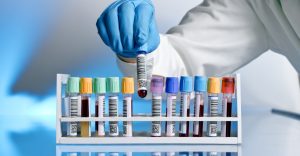Harvard and MIT researchers discover a potential ally within our gut microbiome, offering new hope in the fight against the world’s leading killer: heart disease.
Others are reading now
In an era where heart disease remains the leading cause of mortality worldwide, claiming around 17.5 million lives annually according to WHO estimates, a groundbreaking study offers a glimmer of hope.
Researchers from the Broad Institute of MIT and Harvard have identified a previously overlooked protector against cardiovascular disease lurking within our own bodies: a specific species of gut bacteria.
The Unseen Heroes Within Us
The study, published recently in the scientific journal Cell, shifts the spotlight onto the microscopic inhabitants of our gastrointestinal tract.
By analyzing fecal and blood samples from 1,400 participants in the ongoing Framingham Heart Study, the team uncovered the presence of Oscillibacter, a bacterial species with the unique ability to break down cholesterol. This process not only reduces the levels of this harmful fat in the bloodstream but also potentially lowers the risk of cardiovascular diseases.
Also read
Participants with a high concentration of Oscillibacter in their gut displayed reduced levels of triglycerides and cholesterol in their blood, key contributors to heart disease.
The study further illustrated this connection in the lab, where Oscillibacter, exposed to cholesterol marked with a fluorescent substance, demonstrated its ability to consume and break down fats, effectively lowering cholesterol levels.
Another noteworthy discovery was the identification of Eubacterium coprostanoligenes, another gut bacteria participating in the cholesterol breakdown process.
The Road Ahead
While the association between a diverse gut bacteria community and reduced heart disease risk was previously acknowledged, the specific bacteria involved were not well understood.
The study’s insights pave the way for future animal studies and human clinical trials to explore how these bacteria precisely influence blood cholesterol levels.
The ultimate goal, as expressed by study leader and gastroenterologist Ramnik Xavier, is to use this knowledge to develop treatments that could reduce the need for medication among high-risk patients.
Although this vision might be years away, the potential for early intervention in at-risk groups offers a hopeful outlook for heart disease prevention.








